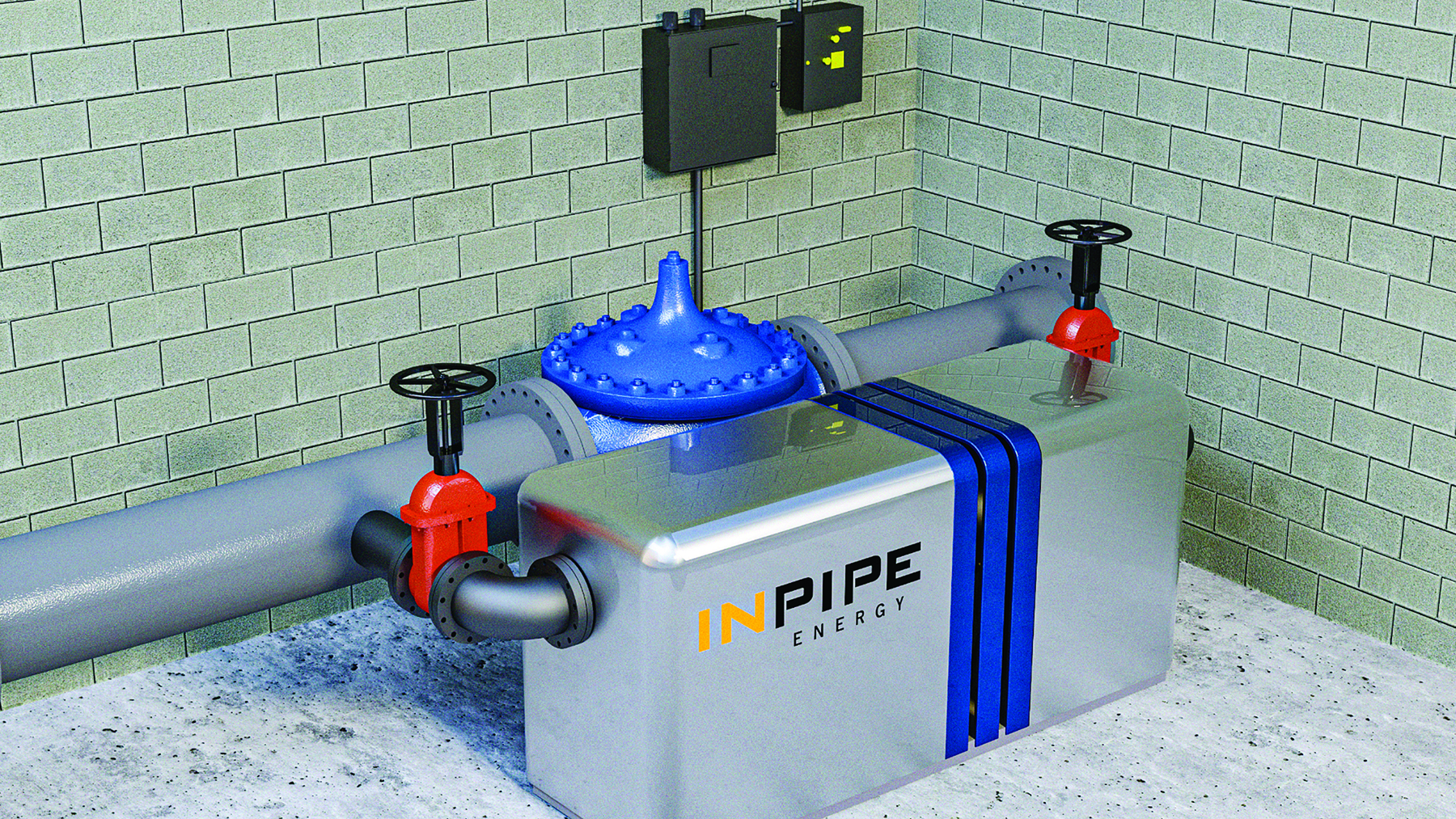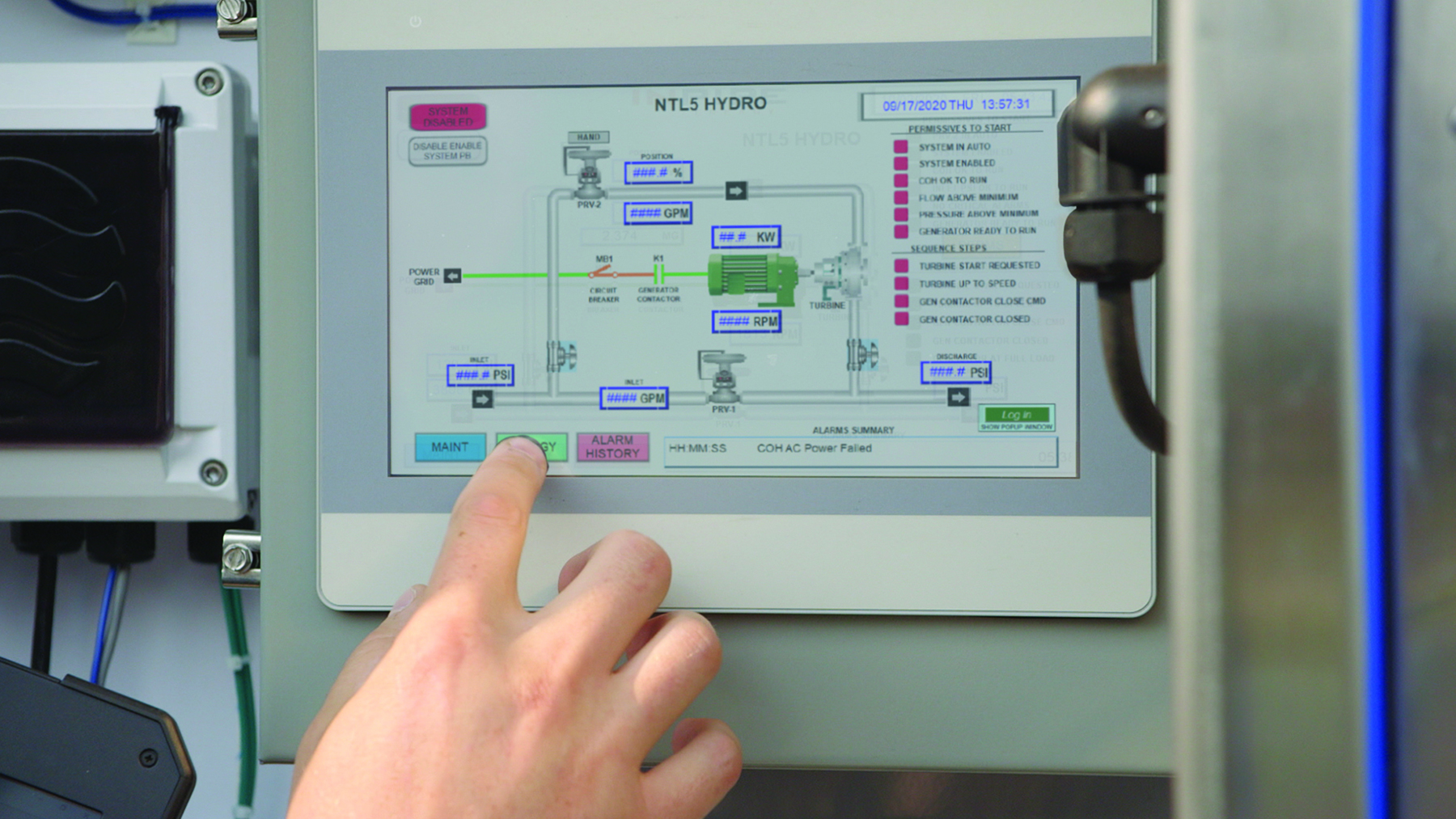
The city of Hillsboro, Oregon, has launched a $400,000 micro-hydropower project using a prototype of In-PRV, a new technology that generates clean, carbon-free energy as it reduces excess pressure in drinking water pipelines. The pressure-reducing valve technology was developed by InPipe Energy (inpipeenergy.com), a small Portland startup founded in 2016 by Gregg Semler.
In-PRV is a first-of-its-kind, digitally enabled system that combines smart control software with technologies that reduce water pressure, collect energy, and provide critical operational data. In-PRV can lower the cost of operating water distribution systems because it uses renewable energy gathered from the water system itself rather than needing to draw energy entirely from other utilities, according to Semler.
Hillsboro receives the majority of its water from the Joint Water Commission, which operates a conventional treatment plant in Washington County. The water is gravity-fed from a reservoir, creating high pressure in the transmission lines. “The water is provided via large transmission mains that have system pressures of about 130 psi,” says Eric Hielema, P.E., an engineering manager for Hillsboro’s water department. “The water (then) passes through pressure-reducing valves to decrease the pressure to a level that is safe for the water system and plumbing fixtures of the city of Hillsboro’s customers.
“Pressure can be thought of as potential energy — like a rock at the precipice of a hill,” Hielema explains. “PRVs ‘bleed’ this energy much like a person folding the end of a garden hose to decrease the output of the hose.” However, with typical PRVs, the energy that the valves bleed off is wasted as an uncollected byproduct of water transmission and distribution, he says.
The In-PRV system, however, captures that wasted energy. The system was installed in a bypass adjacent to an existing Hillsboro PRV facility, according to Semler. This was so the In-PRV system could be shut off, if desired, without impacting the city’s water distribution system, Hielema explains.

Installation of the In-PRV system is not particularly complex or difficult, according to Hielema. “It is very similar to (the installation of) other water system assets,” he says. “However, it does require some investment in the supporting infrastructure and supervisory control and data acquisition (systems).”
In a video about the installation, Dave Moldal, a senior program manager at Energy Trust of Oregon, said he expected the tiny installation to generate a little over 200,000 kWh annually of clean, renewable electricity. This is the same as the annual electricity load of about 20 typical Oregon homes, he says.
The Hillsboro project is generating power for the Gordon Faber Recreation Complex’s lights, concessions, and electric vehicle charging stations. The complex features a stadium for the Hillsboro Hops, a minor league baseball team affiliated with Major League Baseball’s Arizona Diamondbacks.
Grant funding from Portland General Electric and incentives from Energy Trust of Oregon supported 80 percent of the project’s cost, according to Hielema. Because of this, the city expects to pay for the project in less than five years.
For others who might be considering the installation of an In-PRV system, Hielema says that “the biggest technical challenge by far is ensuring that the design parameters are congruent with (desired) water distribution operations.” Questions that have to be answered include whether or not the system is compatible with the existing water operator’s SCADA system and whether the design has “enough flexibility that it can maintain operational time with system flows, resulting in a net benefit with a reasonable payback period,” he says.
Hielema suggests that the location of an existing PRV would be a good location for an In-PRV system because of the access it would offer to a pressure differential in the pipes. That differential must be large enough to drive the In-PRV unit, he says. It is also important that a right of way exists for the asset’s installation so that access for maintenance is possible.
And, of course, having a location that will use the produced electricity or be able to connect it to the grid is crucial. To that end, it is also important that water operations groups be interested in branching out into power generation, according to Hielema. “Since this is not typical for water operators, the team must be willing to take on new duties.”
The Solar Impulse Foundation of Lausanne, Switzerland, has awarded the In-PRV system a Solar Impulse Label. This label is granted for efficient, clean, and profitable solutions that have positive impacts on the environment and quality of life. External, independent experts assess solutions before they are granted labels, according to information on the foundation’s website.
The Solar Impulse Foundation was founded by Bertrand Piccard, who is also the chair. “Each time I speak of protecting the environment to heads of state or government officials, they tell me that it is too expensive,” Piccard is quoted as saying on the foundation’s website. “This label is a strong message to them: (Profitable) solutions exist, and (they) represent the biggest market opportunity of our century.”
This article first appeared in the March/April 2021 issue of Civil Engineering.




